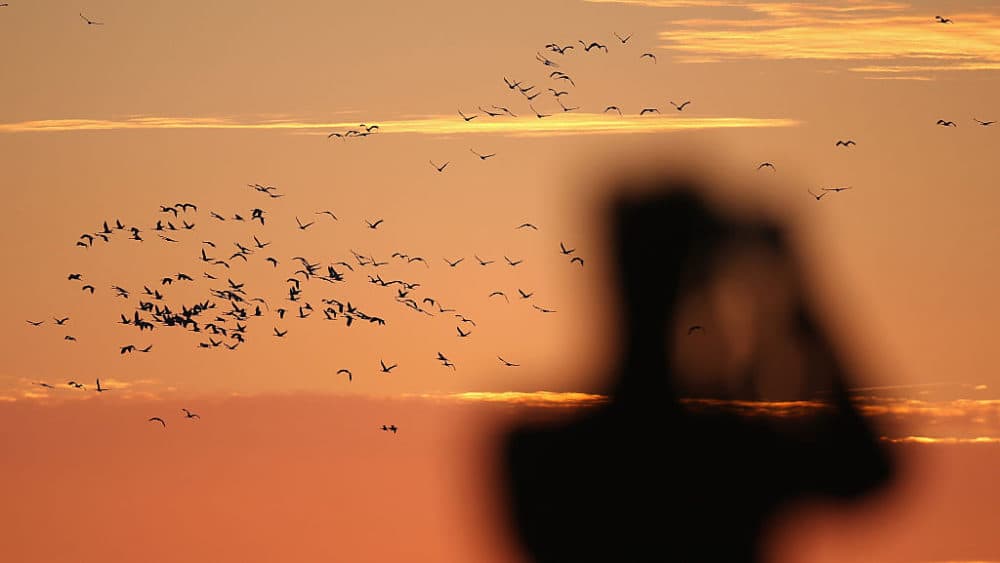Advertisement
Cooped Up At Home? Try Birdwatching
Resume
Finding joy in these uncertain times can be as easy as looking up.
Birds are migrating this time of year, and they’re painting the skies as the majority of the country is cooped up at home due to the spread of the coronavirus.
So go outdoors — in a socially distant way, of course — and look up at the creatures soaring up above, says ornithologist Richard Gibbons, conservation director at Houston Audubon and a research associate of the Louisiana State University Museum of Natural Science.
“These are very, very strange times, and we're all trying to find a balance between being informed and also staying sane,” he says. “For many people, such a small dose of nature can help center them. Life is going on all around us and nature's a great teacher.”
Like many of us who might be going stir crazy inside our homes, birds are also experiencing their own form of restlessness, Gibbons says. Zugunruhe, a German word meaning migratory restlessness, occurs when birds feel the sudden urge to move.
Some birds get that jolt based on changes in the weather, Gibbons says.
When temperature changes, it’s known as greenup — “when leaf out happens and everything springs to life and the insects start,” he says. This encourages birds to say “it’s time for me to go,” he says.
Other species of birds that migrate across the equator depending on the time of year know it’s time to migrate based on the length of the day, Gibbons says.
“If you're on the other side of the equator or way down in another part of Central America, you don't know when things are greening up up here,” he explains. “Purple martins are back now in North America, and when they were down in Brazil, the day length started switching. It reached a point and they said, 'It's time to go.' ”
Migration is driven by the need for successful breeding, Gibbons says. Sometimes when birds are migrating they will remember areas where they nested in years past.
“When something's that critically important to your survival and the survival of the species, redundancy is a really good thing,” he says. “So, yes, you do have dead reckoning where [birds] look down and say, 'Hey, I remember that patch. That's where we were last year. That's home.' ”
Click here for Houston Audubon's "Bird Cam."
Lynn Menegon produced and edited this interview for broadcast with Kathleen McKenna. Samantha Raphelson adapted it for the web.
This segment aired on March 25, 2020.

